“Injured and exhausted by their flight through the rugged terrain, the horses were no match for the fast trucks that continued the chase, and ropers, lashed to the cabs of the trucks, easily lassoed them. Tied to the other end of the short ropes were heavy truck tires, which the exhausted and frightened horses would drag around attempting to escape, until they could fight no longer.”
~ Velma Bronn Johnston, The Fight To Save A Memory
Image used by permission from the University of Nevada, Reno. Special Collections, Gus Bundy, Wild Horses.
“Mustanging” was the practice of capturing wild horses and selling them off for fast cash. There were no regulations that governed this practice and it became a free-for-all. Wild horses were pursued by truck, plane, horseback. Most people are familiar with the type of mustanging that lassoed a horse and tied truck tires to the end of the rope, exhausting the animals so they could be tied up and dragged onto trucks. Another method included running wild horses into pit traps or off ledges.
The captured horses were then sold off to be ground up for chicken feed, pet food and fertilizer.
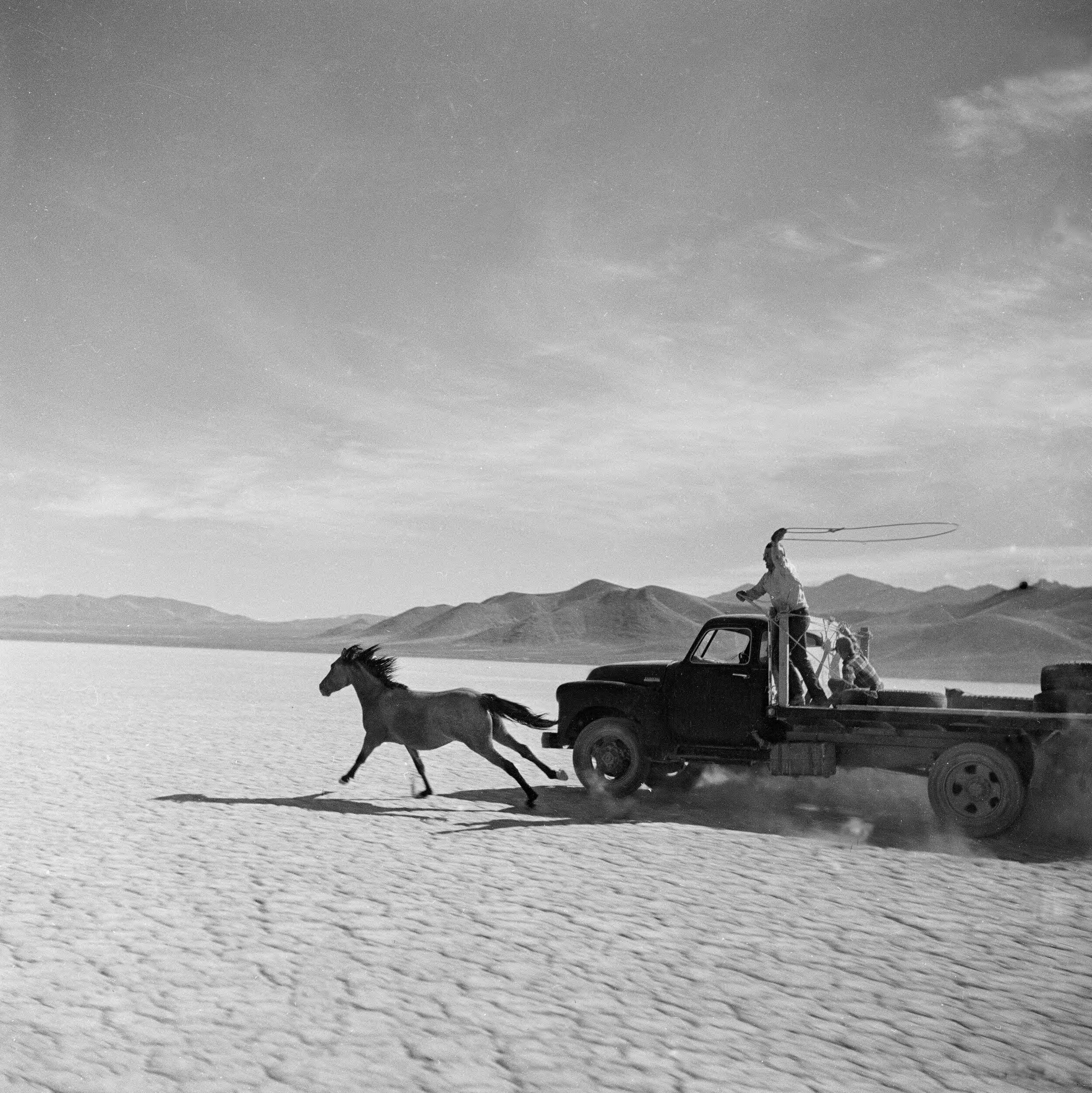
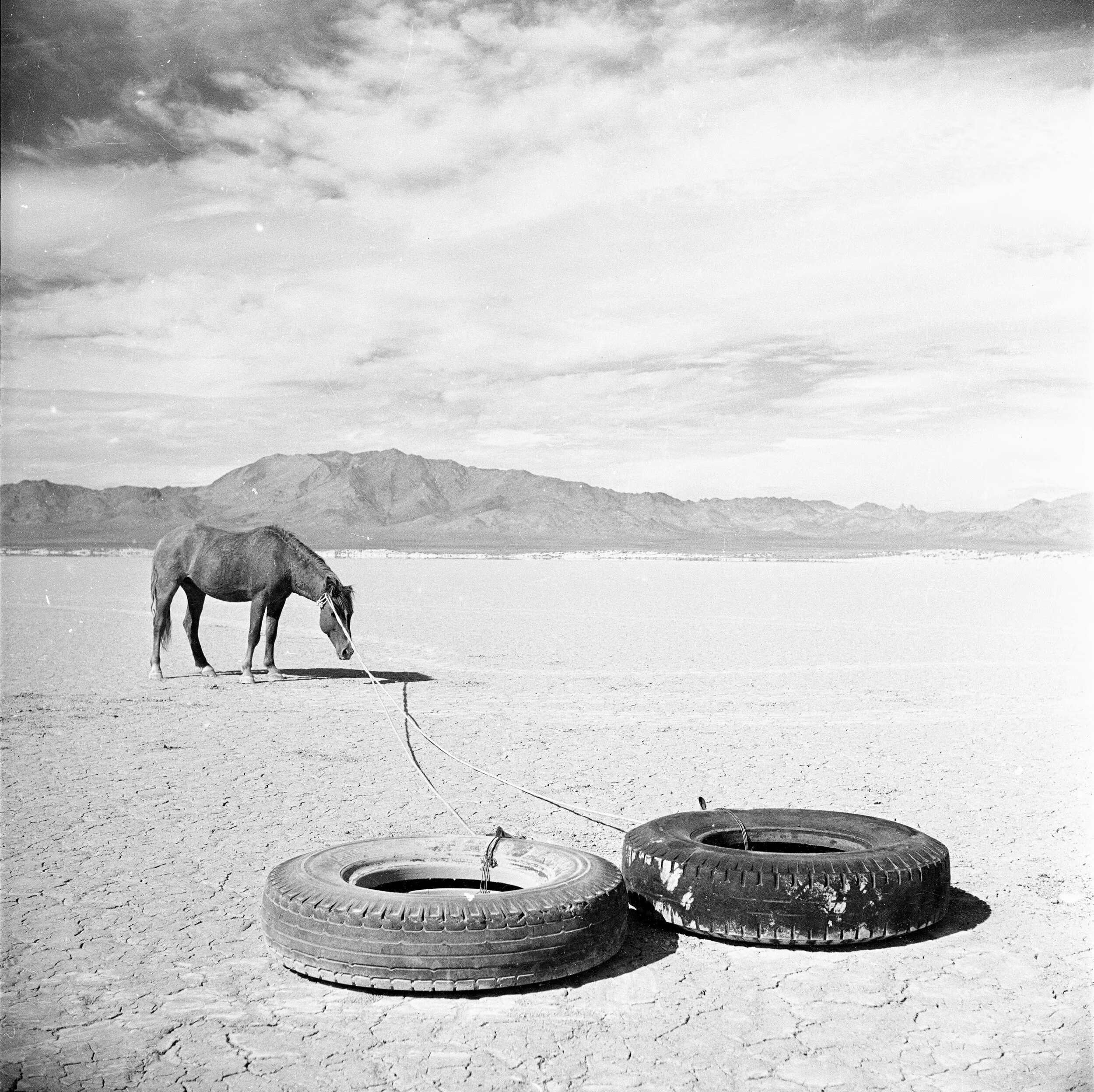
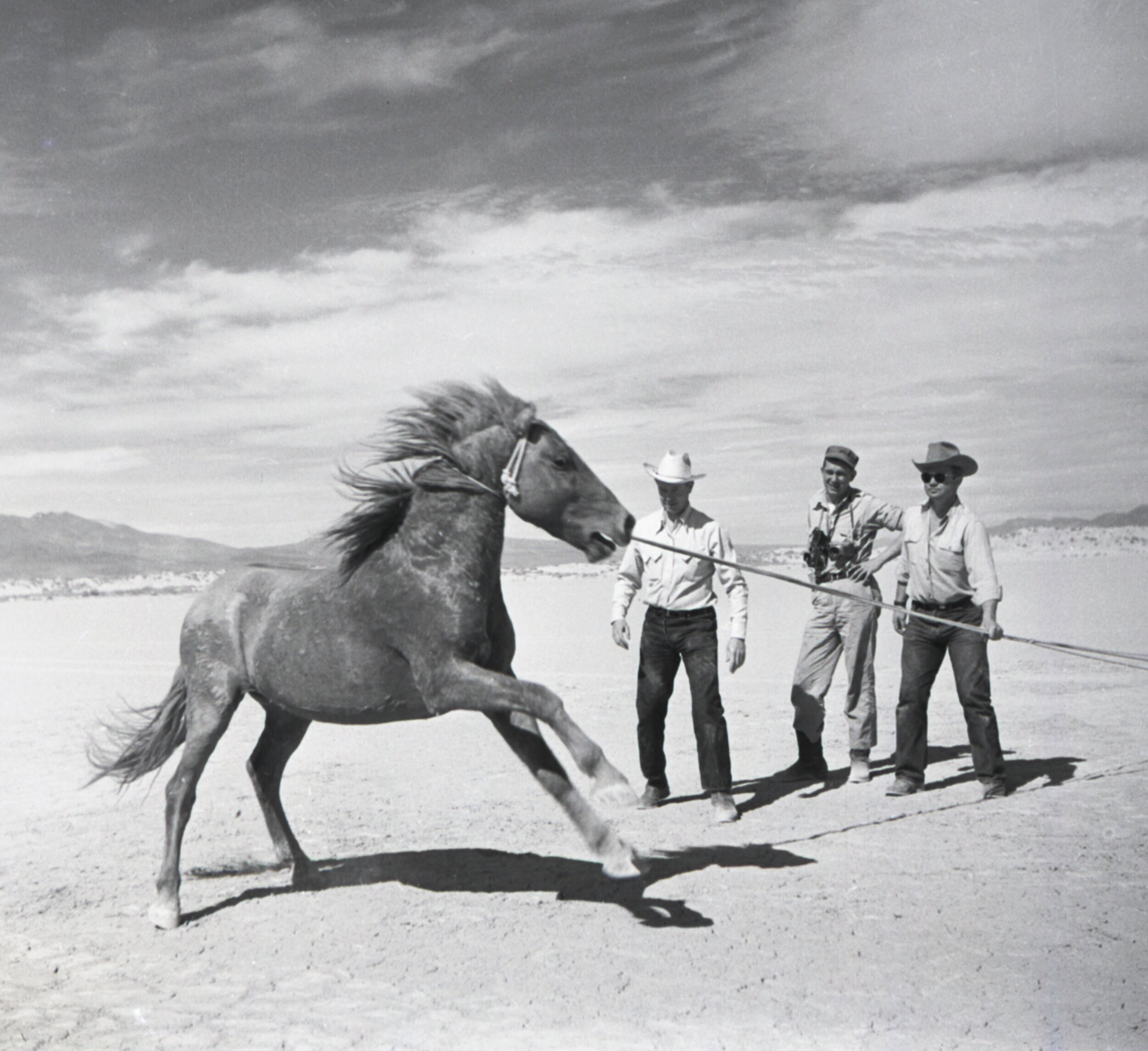
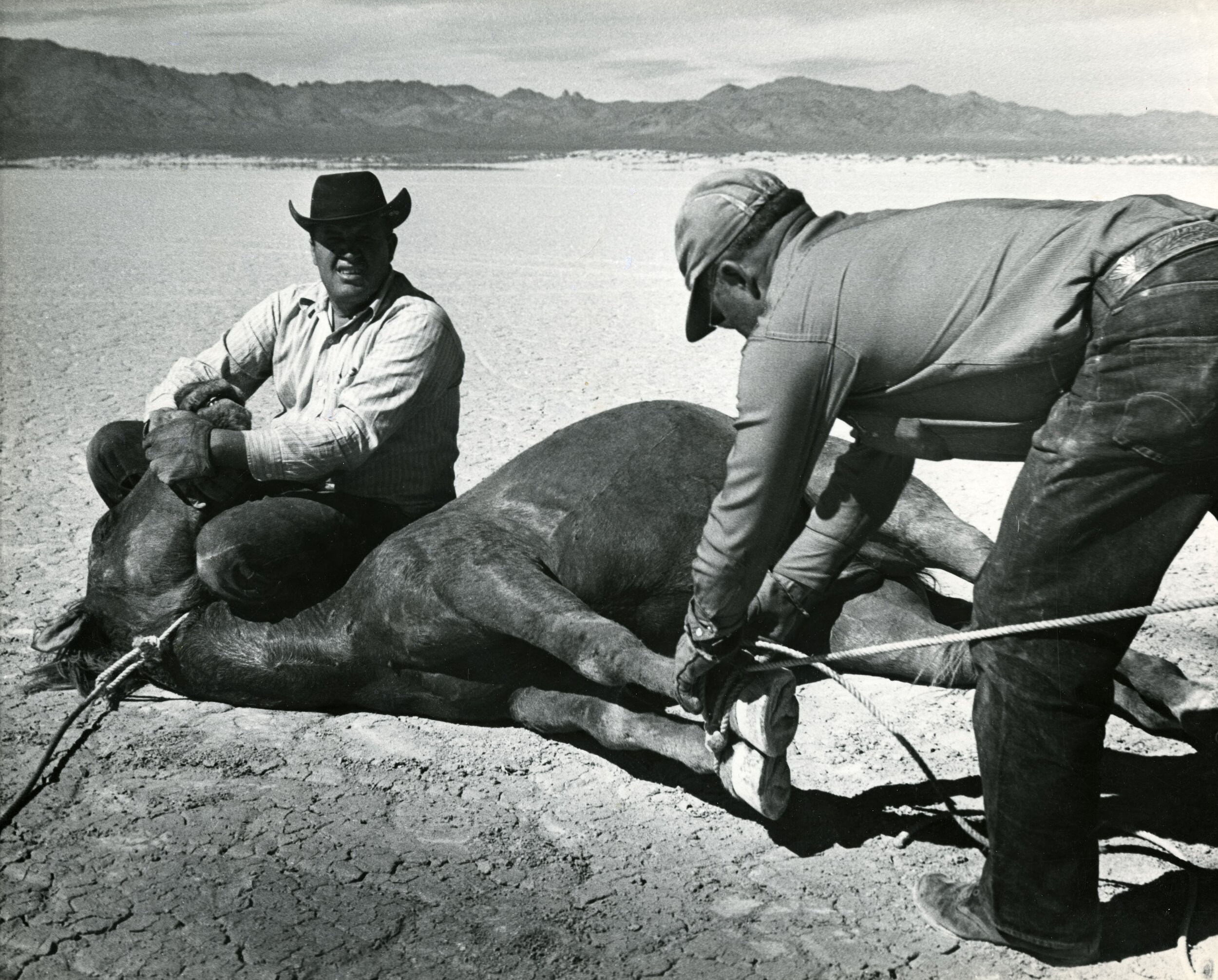
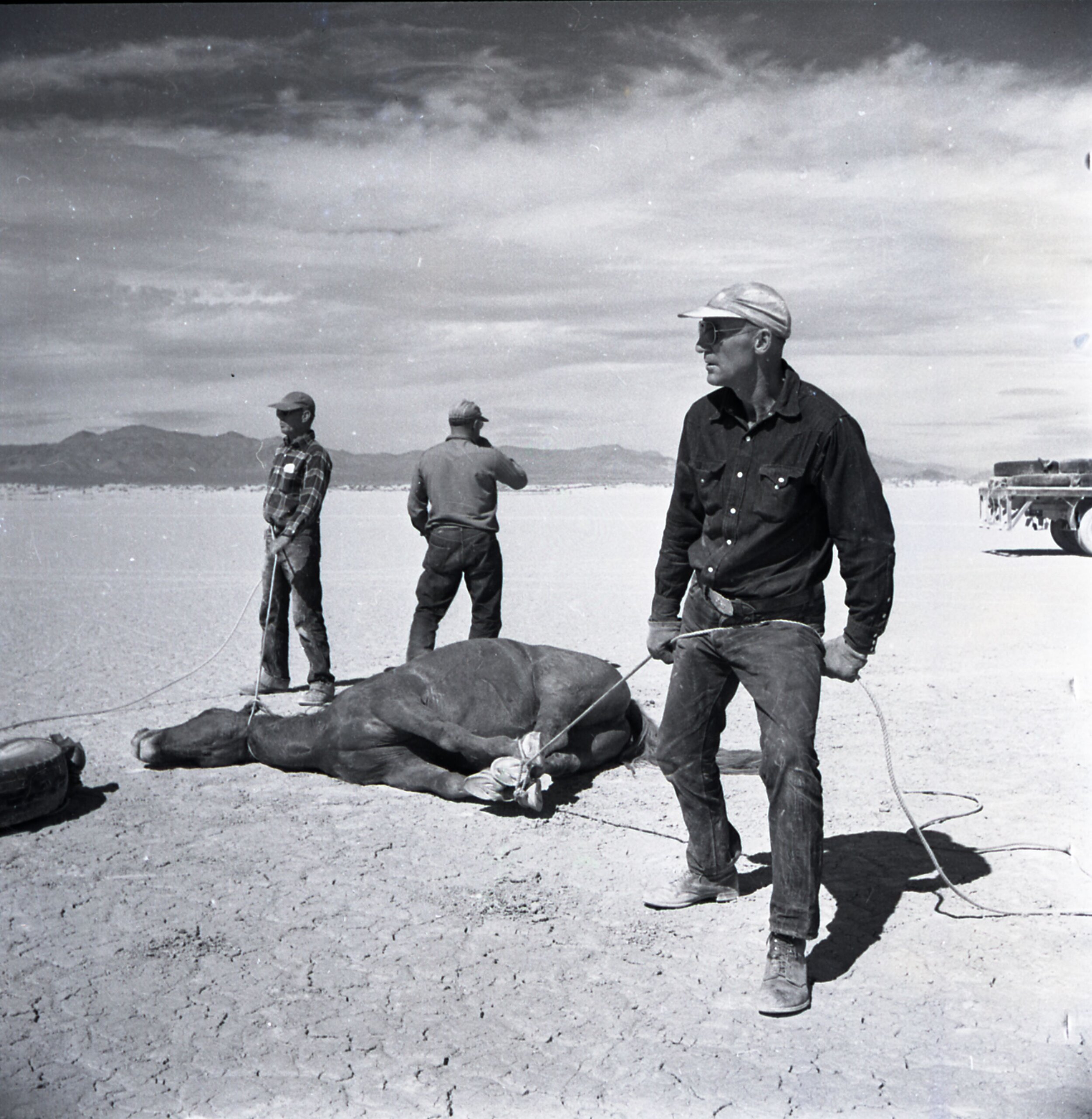
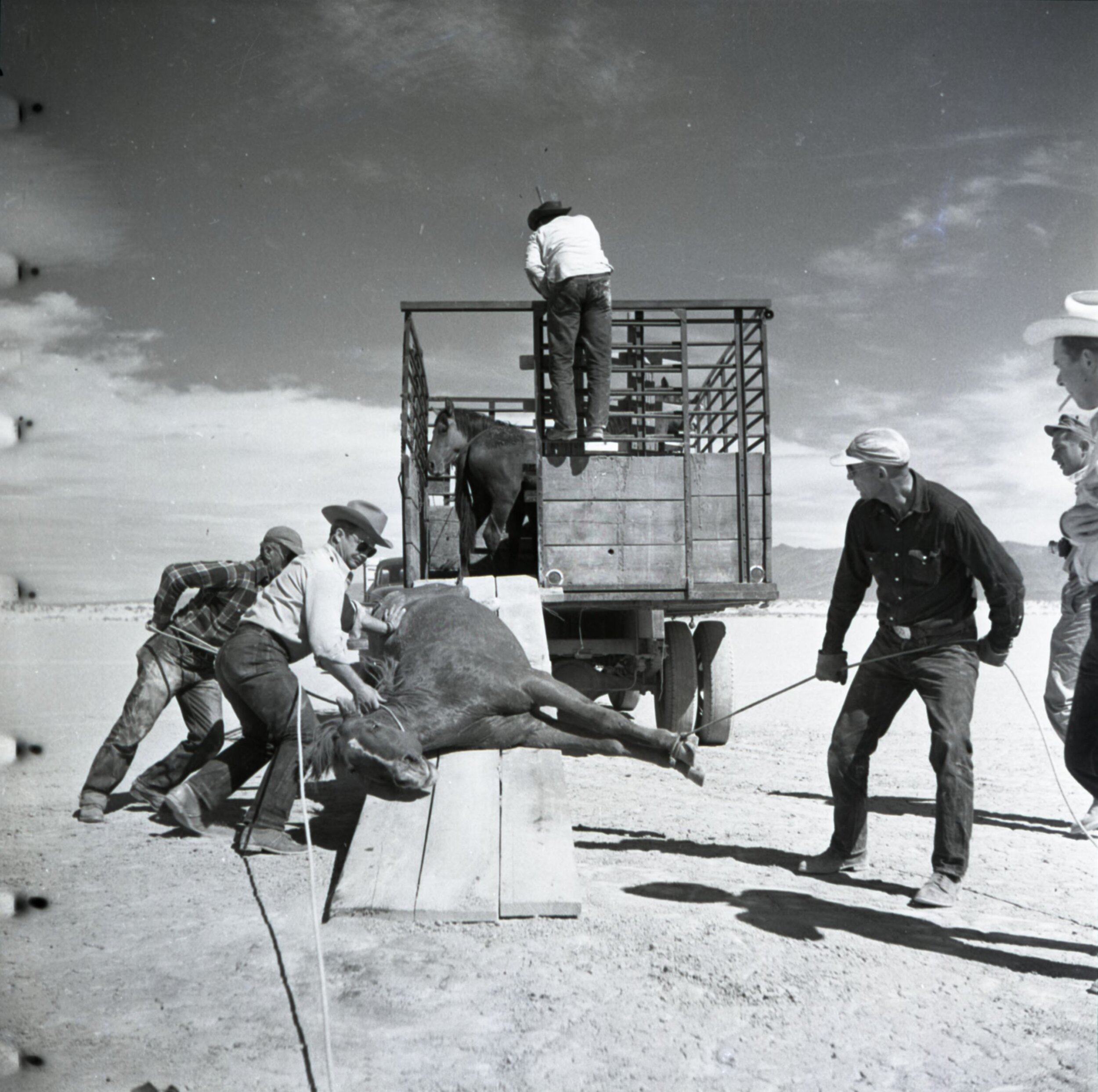
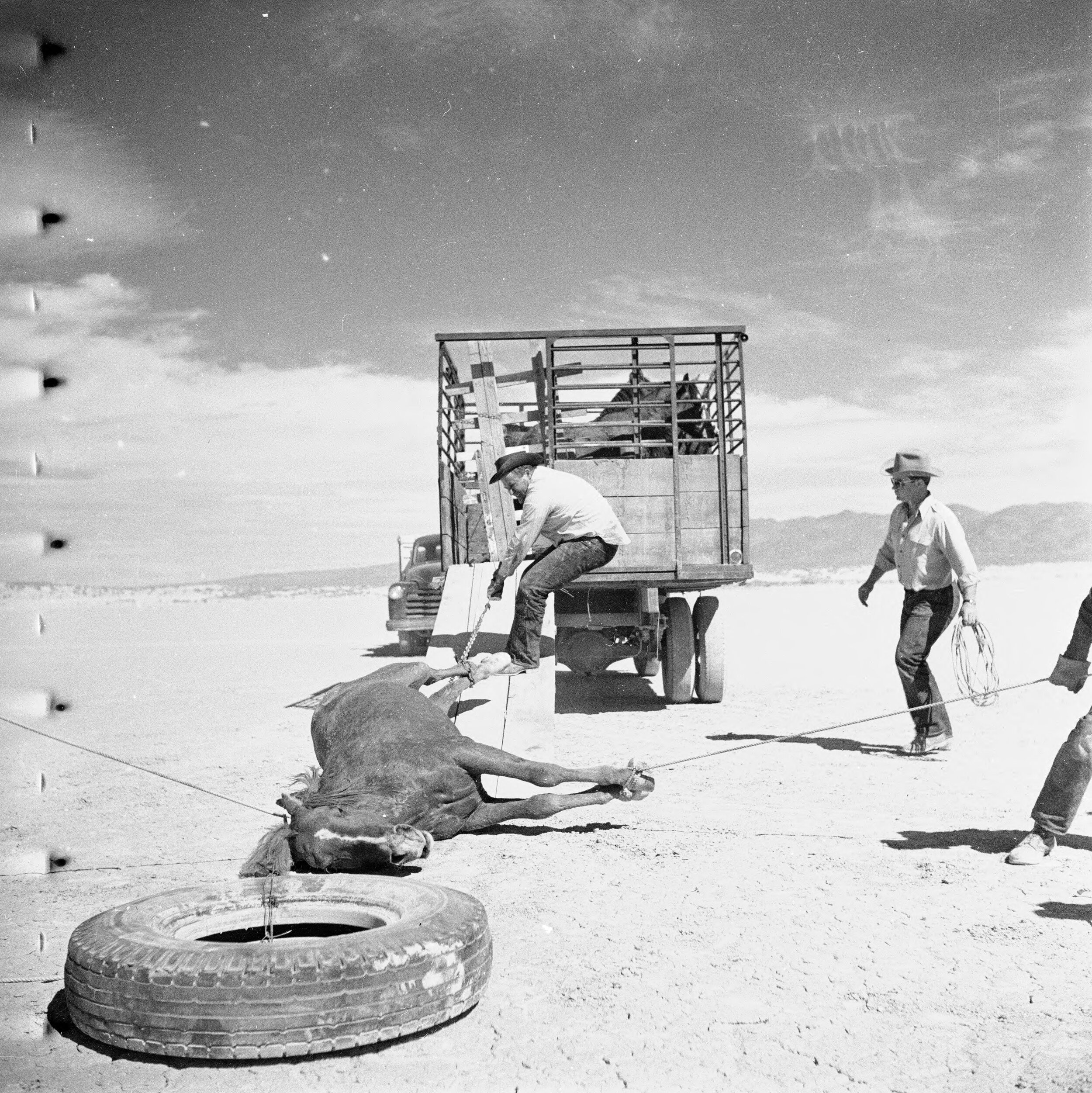
Images used by permission from the University of Nevada, Reno. Special Collections, Gus Bundy, Wild Horses. Copyright laws apply. Visit University of Nevada Reno for republish permissions.
Wild horses were also seen as competition for grass and water used to feed private livestock on public lands. They were fenced off of water, water holes were poisoned and they were shot.
A population of more than 2 million wild horses fell to 20,000 before World War II. Those left behind retreated to the most remote stretches of the desert. The nomads, the unwanted, the despised, the misfits.
Exhibit created and presented by Wild Horse Education.
We thank the Nevada Historical Society and the University of Nevada Reno for providing permissions to feature material from their collections.
The content of this exhibit is protected under copyright laws. Much of this content can only be reproduced through written permission. Contact Laura@WildHorseEducation.org for more information.

